February 13th 2008
Italian and French at CCCA 2008
Part II
Story and Photos by Brandy Elitch
Scroll down for more photos.

Jon Shirley's Ferrari 166 barchetta.
|
Read CCCA Part I
In many respects, the Classic Car Club of America has set the parameters around car collecting in the US. When the club was founded in 1953, car collectors were not an organized group (except arguably the hot rodders!). There were very few single-marque clubs, few books or club publications, and few car shows. The organizers knew that in a general sense they had something in common � people with an appreciation for the cars of the �carriage trade,� expensive, handmade cars of the twenties and thirties, custom bodied cars, built regardless of price, and often with superlative engineering.
Just junk it
Today the idea that a Bugatti or Duesenberg is a work of art is pretty intuitive to most people reading this publication, but remember that in 1953 what we call Classic Cars today were often scrapped because no one wanted to buy tires or a battery for them. Charles Chayne found a Bugatti Royale in a junkyard in Long Island; indeed, this is where the vast majority of the great cars went, and as a percentage of total production, only a small number survive today. Packard made a million cars from 1899 to 1956, and probably ten thousand survive today. So, the CCCA had their work cut out for them. They had to define what made a classic car, and set up a classification committee to weigh the merits of each entry.
The new club had to define what their publications would look like, because for most club members, the publications are their main link to the club. They had to set up regions and regional associations to provide activities for their members. They had to define judging standards � about as contentious a subject as you will ever find. The fact is that they did all of these things before any other big club, and have an impressive record of success.
Each January they host an annual meeting, in a different city each year. This year it was Bellevue, WA, right next to Seattle. As you might expect, a lot of wealth has been created in the Seattle area in the last 25 years (a far cry from a quarter of a century earlier, when there was a billboard near the airport saying, �Will The Last Person to Leave Seattle Please Turn Out The Lights?�). Consequently, there are a lot of car collectors in the area, and some of them graciously opened up their private collections for the group.
Jon Shirley
One host was Jon Shirley, who has a truly magnificent Ferrari collection. Yes, the cars are spectacular, but I have seen most of them before. What was really impressive was the fully restored circa 1955-60 FIAT race car transporter, looking like it was just lifted from a race car paddock during the period. The other thing that impressed was the overall presentation. The effect is only partly due to the cars; the way that they are displayed and the accompanying displays are what is so powerful. In this case, there are custom model cases with hundreds of models and period memorabilia, located upstairs on a loft overlooking the cars, along with neon signs, authentic flags, a jukebox, etc. With collections such as Shirley�s, we are moving to a new level of car collecting, where the display looks more like a museum than just a garage crammed with cars, and it is a lot harder to find all that memorabilia than it is to find the cars, eBay notwithstanding!
Greg Whitten
We toured two adjacent collections. One was a comprehensive exhibit of prewar Lincolns. The second was hosted by owner Greg Whitten, and included the Alfa campaigned by Pintacuda in the 1934 Mille Miglia, and an Alfa type 33, as well as an Aston Martin similar to that which won LeMans in 1959. Greg campaigns these cars in vintage racing regularly, more power to him.
Across town were two more collections, one upstairs, one downstairs. The Ken McBride collection was similar to the Shirley one: a loft with a living room atmosphere and a den with models and other collectibles, all beautifully arranged, overlooking a world class array of cars, all restored, except for a Dual Ghia hiding in the corner, midway through the restoration process. The collection downstairs was mostly race cars, all displayed with awards, posters, and race memorabilia. While still in overload, we were bussed to the Boeing Museum of Flight (a must see if you are in Seattle), and from there to a private estate where the owner had about a dozen cars displayed in a wing of the house, including an early fifties Chrysler Ghia dream car. The final stop was a joint collection of seven CCCA members, including some interesting Italian motorcycles and an original, unrestored 1919 Turcat & Mery Million-Guiot Torpedo. By my count, including the LeMay collection, we saw close to a thousand collector cars in four days, surely enough to last until the first round of car shows begins in the Spring!
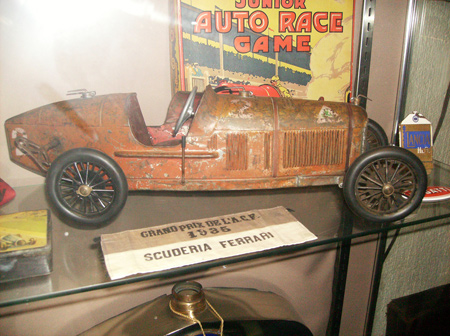
This is an extremely rare Alfa Romeo P2 model, seen at the CCCA club event.
|
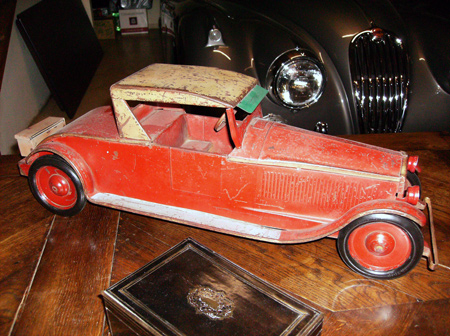
Not sure of what car this model represents, probably French, mid 1920s. Also seen at the CCCA collection.
|
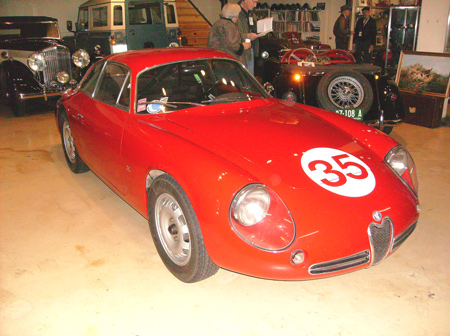
An Alfa GTZ 1300 longtail as seen at the CCCA collection.
|
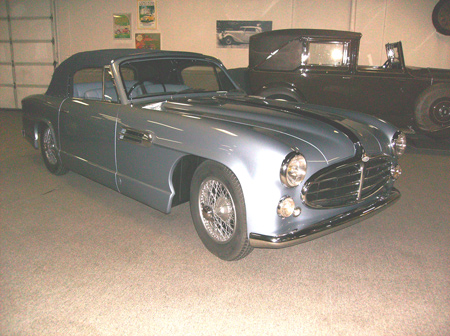
Delahaye circa 1954, note RHD, CCCA Auto collection.
|
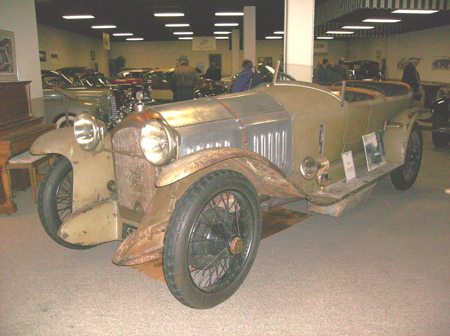
1919 Turcat & Mery, CCCA collection.
|
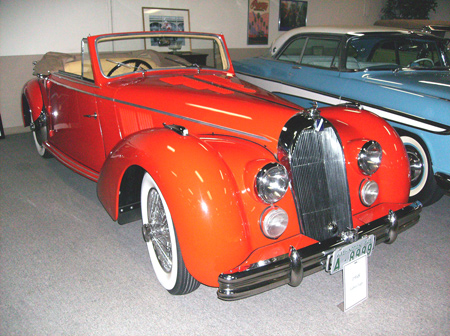
Talbot Lago, CCCA collection.
|
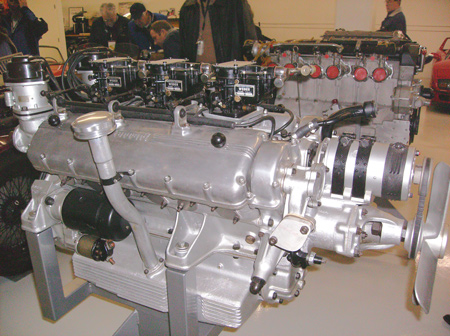
Ferrari engines as part of the Greg Whitten collection.
|
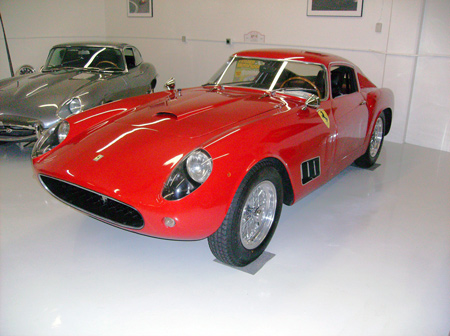
Greg Whitten's Ferrari TdF.
|
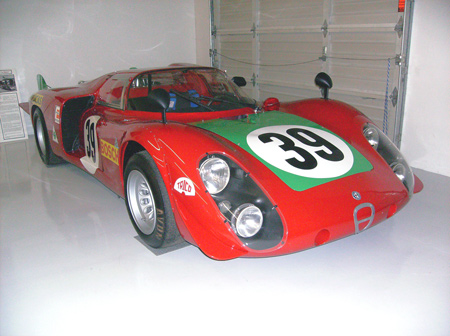
Alfa Tipo 33 Longtail, Greg Whitten collection.
|
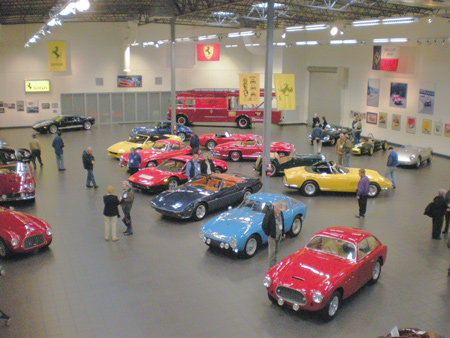
Overhead view of the Shirley collection. Photo by John T. Kowalczyk.
|
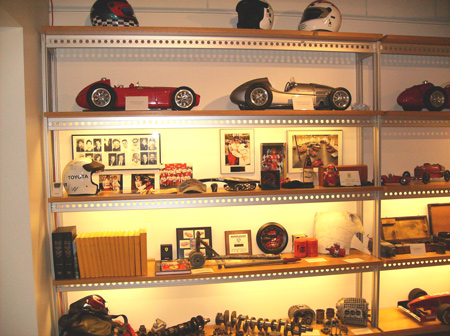
A selection of models lining the walls of Jon Shirley's "garage".
|
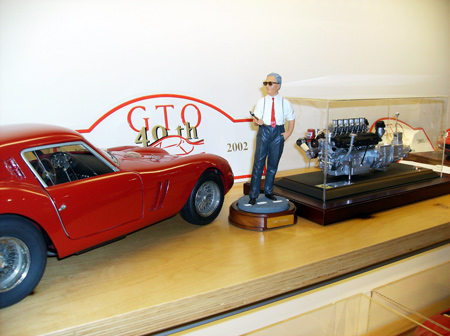
Shirley collection, self explanatory!
|
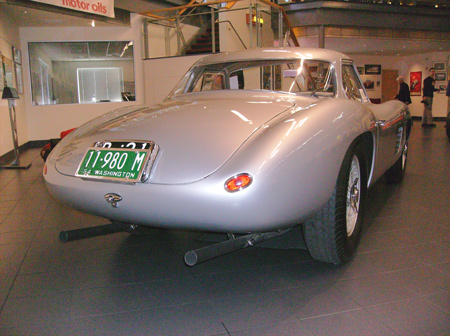
Rare rear view of the Rossellini 375 Scaglietti coupe, Shirley collection.
|
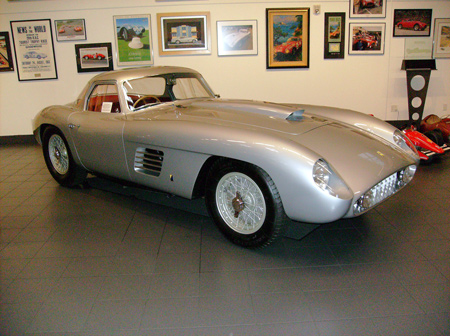
And the front view. This was rebodied by Scaglietti per the request of Rossellin, and it was the last Ferrari owned by the great director.
|
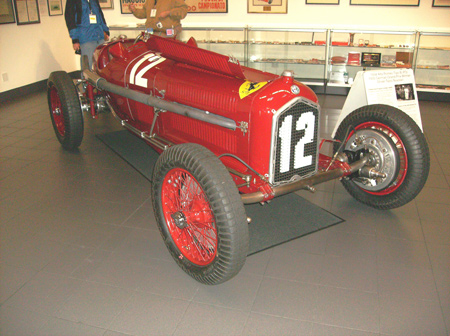
The Nuvolari 'Alfa Romeo P3, Jon Shirley collection.
|
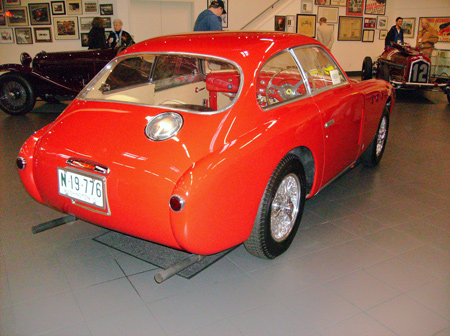
Ferrari by Vignale, circa 1952, Shirley collection.
|
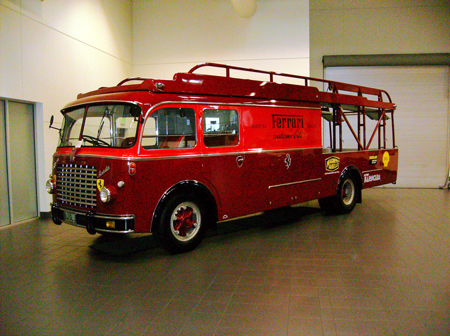
The Fiat Ferrari Transporter, circa late 1950s, early 60s. Jon Shirley collection.
|
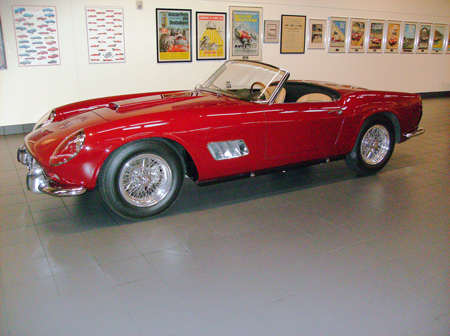
Shirley Ferrari 260GT California.
|
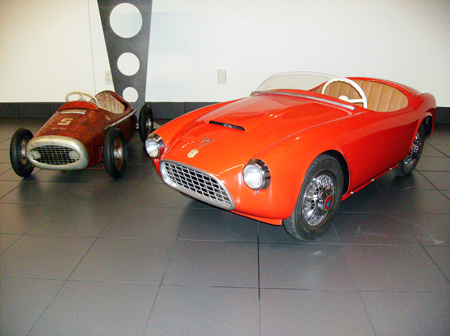
Shirlely collection; two Ferrari cars for kids. (lucky kids).
|
|



